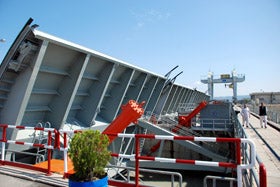 At the 9th South Asia Economics Students' Meet on Green Growth, participants shared their vision about South Asian cities of the future. These are their innovative ideas.
At the 9th South Asia Economics Students' Meet on Green Growth, participants shared their vision about South Asian cities of the future. These are their innovative ideas.
South Asia, home to 1.3 billion people, houses some of the world's largest cities: Delhi, Dhaka, Kolkata, Karachi and Mumbai. As urbanization increases, the region will experience a hike in demand, consumption and production. Today, in Bhutan, 34% of the population still lives without electricity. With urbanization and development, carbon emissions from electricity generation and usage are bound to rise. Historically, it can be seen that the more developed a country, the greater its carbon emissions; USA's and Canada's drastic emission rates corroborate this. Although South Asia currently contributes much less to the carbon footprint than the more developed nations of the world, it is imperative to plan development so as to reduce its impact on environment.
I live in Karachi, Pakistan. I have seen lives of a street hawker, a daily wage earner living in slums and of a CEO of a reputed organization. One thing is common: intentionally, or unintentionally, they both waste energy. While the poor lack the finances to invest in energy-efficient but expensive technology, the rich simply don't care. This is not only seen in Pakistan but is a dilemma of most developing countries. While on the one hand there is a need to assist some to be green consumers, on the other, a behavioral revolution waits to be initiated.
For the former, the most feasible program the governments can undertake is that of selling energy-efficient technology to the financially constrained individuals at monthly installments. In South Asia, uptake of new technology is barred due to lack of finances. The energyparadox manifests itself in almost every sphere as the helpless consumer is deterred by the high investment required by green technologies and continues to use the more expensive (in terms of operating cost) appliances. Governments can easily target this barrier by lowering the initial investment and spreading it over a period of a few months. The installments can be easily collected by including an additional minimal amount to the monthly electricity bills of the consumers for a year. Such a program can be re-implemented in case of any market breakthroughs and will ensure high penetration of technology.
For a remedy to behavioral failures, a more systematic approach needs to be adopted. Awareness creation and information are prerequisites to a behavioral change. I keep the air conditioning at 26 degrees thermostat only after seeing the commercials on TV which informed me that less energy is wasted without a significant reduction in cooling at the stated thermostat. I knew of the energy crisis in Pakistan, and so I believed I was doing my part by keeping the thermostat high. People need to be made aware of the global environmental crisis and then they should be encouraged to fulfill their responsibilities to mitigate the danger. Schools should be key players in dispensing such information to the youth. To curb the carbon footprint accompanying development, it is essential to educate the people to direct them towards lower-emission activities and to ensure penetration of energy-efficient technology.
Having said that, there is an increased responsibility on the governments and even South Asian cooperatives such as South Asian Association for Regional Cooperation (SAARC) to intervene in markets where need be. For example, the incandescent bulb still shines with all of its adverse effects in many households in the region. There should be a planned phase-out of any inefficient technology and minimum energy standards should be strictly imposed on the domestic as well as the industrial sector. Moreover, the region should indulge in carbon permits trading to cap the emissions and to charge polluters of the negative social externality. Study after study has shown that products with greater social benefits are always underused while investment in high private benefit products (regardless of their social externality) remains high.
It requires a mutual effort of the governments and the individuals to shed development of the adverse environmental impacts it entails. In Theodore Roosevelt’s words:
Here is your country. Cherish these natural wonders, cherish the natural resources, cherish the history and romance as a sacred heritage, for your children and your children's children. Do not let selfish men or greedy interests skin your country of its beauty, its riches or its romance.


Join the Conversation